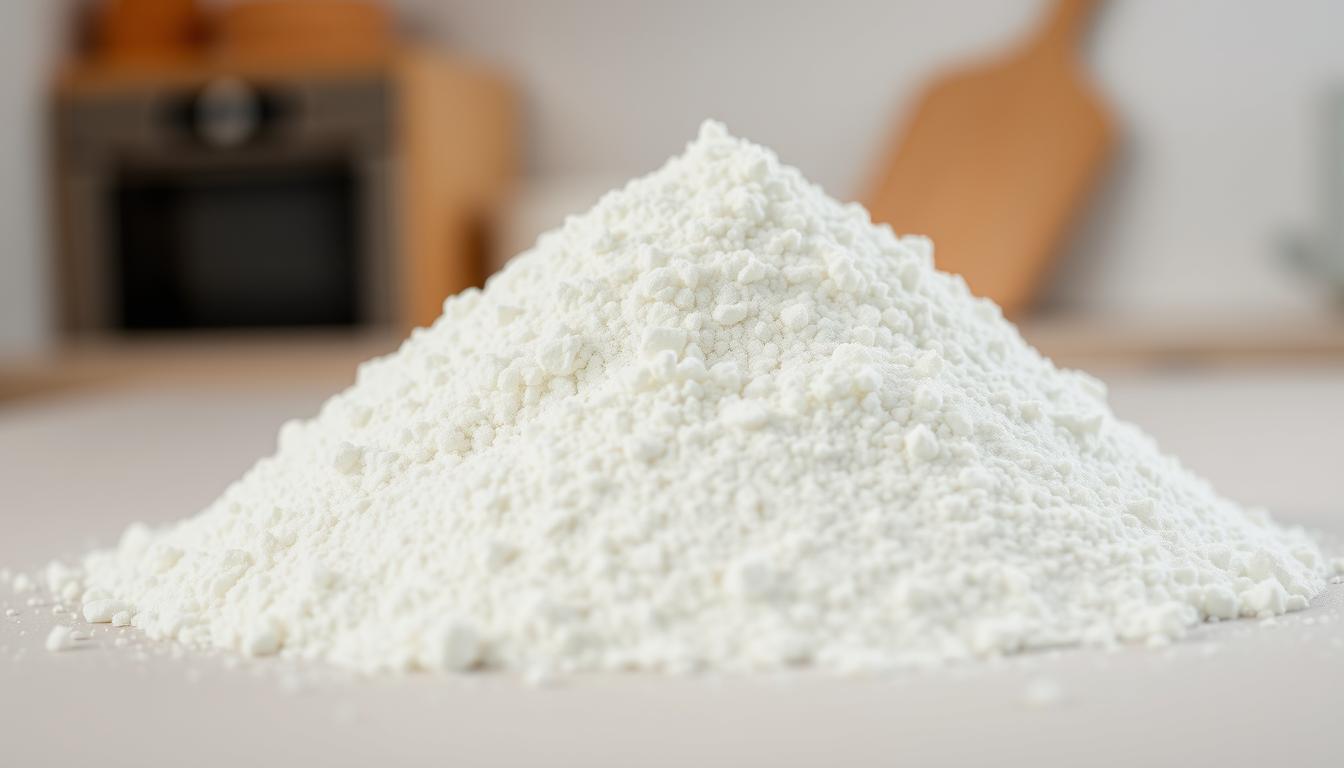
Calcium Chloride Innovative Uses and Surprising Benefits You Didn’t Know About
SUBSCRIBE TO OUR BLOG
Promotions, new products, and recipes.
What You Will Learn
-
The chemical properties of calcium chloride (CaCl₂) and why it’s so versatile.
-
How calcium chloride is used in food science, including cheese making and food preservation.
-
Health and nutritional benefits, including its role in bone health and electrolyte balance.
-
Industrial and environmental applications such as de-icing, dust control, and water treatment.
-
Safety considerations, side effects, and best practices for responsible use.
Calcium chloride, often recognized by its chemical formula CaCl2, is an incredibly versatile inorganic compound with a myriad of applications across different industries. Known for its hygroscopic nature and salty taste, this compound has become indispensable in areas ranging from food science to construction and water treatment. Its ability to absorb moisture and function effectively even at lower temperatures makes it a valuable resource in both commercial and everyday settings.
From enhancing food products as a firming agent to improving air quality by controlling dust particles, the uses of calcium chloride extend far beyond what most people realize. Whether it’s playing a role in cheese making, acting as a de-icing agent, or contributing to bone health through dietary products, calcium chloride helps industries and individuals in countless surprising ways. Let’s dive into its innovative uses and unexpected benefits you may not have encountered before.
What is Calcium Chloride and Why is it So Versatile?
Understanding the Chemical Formula and Properties
Calcium chloride, commonly abbreviated as CaCl2, is an inorganic compound that is widely recognized for its versatile properties. It is composed of calcium and chloride ions, forming a chemical structure that makes it highly effective in various applications. One of its most notable characteristics is its hygroscopic nature, meaning it readily absorbs moisture from its surroundings. This property makes calcium chloride extremely useful in settings where controlling humidity or moisture is essential.
Additionally, calcium chloride is known for its salty taste, which has led to its use in certain food applications. It also has a remarkable ability to function as a de-icing agent, especially in colder climates where lower temperatures render traditional methods less effective. With a melting point that allows it to work in sub-freezing conditions, calcium chloride is a staple in regions that experience harsh winters.
Common Uses of Calcium Chloride Across Industries
The uses of calcium chloride span multiple industries due to its unique properties. In the food industry, food-grade calcium chloride is employed in food processing and preservation. It acts as a firming agent in products such as canned fruits and vegetables, helping maintain their texture and prolonging their shelf life. Additionally, it is used in the brewing process to enhance the flavor profile of beverages.
In construction, calcium chloride plays a critical role at construction sites. Its hygroscopic nature is leveraged for dust control, reducing the spread of dust particles that can harm air quality. It is also utilized for dehumidification during building processes, ensuring optimal conditions for material curing and stability. In water treatment, calcium chloride is effective in removing magnesium ions, improving water quality and making it safer for consumption.
Calcium Chloride in Food Science and Nutrition
Applications in the Food Industry
Calcium chloride is a significant player in food science, offering multiple benefits that enhance both the quality and longevity of food products. It acts as a firming agent, particularly in canned fruits and vegetables, ensuring that these items maintain their texture during storage and processing. This application is critical in food preservation, where maintaining the visual and textural appeal of food is essential.
Another fascinating use of calcium chloride is in cheese making. By balancing calcium levels in the milk, it helps create the perfect conditions for curd formation. This process is fundamental in producing a wide range of cheeses, making calcium chloride an indispensable tool for dairy producers. Furthermore, it is used in food additives and beverages to improve their shelf life and maintain their quality over a longer period. Calcium chloride can be sourced from Cape Crystal Brands.
Health Benefits and Nutritional Aspects
Calcium chloride is more than just a tool for food processing; it also offers several health benefits when used in appropriate amounts. It contains calcium ions, which are vital for maintaining bone health and supporting proper heart rhythm. This makes it a valuable source of calcium in dietary products, particularly for individuals who may not get enough calcium from other sources.
Moreover, calcium chloride is included in sports drinks to replenish electrolytes lost during physical activity. It is often paired with vitamin D and vitamin C (ascorbic acid) in fortified products to enhance their nutritional profile. Additionally, it serves as a salt substitute in some diets to reduce sodium content, offering a healthier alternative to traditional table salt. However, as registered dietitians recommend, it should be used in small amounts to avoid potential side effects like a bitter taste.
Addressing Health Effects and Potential Concerns
Side Effects and Expert Recommendations
While calcium chloride offers a range of benefits, it is essential to consider its potential health effects. In excessive amounts, it can cause adverse effects such as a bitter taste, which may impact the palatability of food products. Clinical trials have shown that when used appropriately, calcium chloride is an effective source of calcium and contributes to overall health. For the best results, experts, including registered dietitians, advise using calcium chloride in small amounts and in accordance with regulatory guidelines.
It is also important to consult healthcare professionals, particularly when incorporating calcium chloride into long-term dietary plans. Individuals with pre-existing health conditions, such as high blood pressure, should be cautious about its use, as it may interact with other dietary components or medications. The u.s. food and drug administration closely monitors its use in food products to ensure consumer safety.
Comparisons with Other Compounds
Calcium chloride stands out from other chemical compounds due to its unique properties and applications. For example, it differs from potassium chloride and potassium iodide, which are also used as food additives but serve different purposes. Similarly, calcium chloride is distinct from calcium lactate, calcium carbonate and sodium carbonate, which are often used as antacids or in industrial applications rather than in food processing.
In some cases, calcium chloride works synergistically with other compounds, such as ascorbic acid, to improve food preservation. These combinations help extend the shelf life of products while maintaining their nutritional value. Its compatibility with other compounds makes it a versatile option in both the food industry and beyond.
Industrial Applications of Calcium Chloride
Environmental and Manufacturing Uses
Calcium chloride plays a vital role in various industrial and environmental applications, showcasing its versatility beyond food and nutrition. One of its primary uses is in improving air quality by controlling dust particles. This is especially important at construction sites and industrial areas where dust can pose significant health and environmental hazards. The compound’s hygroscopic nature helps to bind dust particles together, effectively reducing their presence in the air.
In manufacturing processes, calcium chloride is frequently utilized in the oil and gas industry. Its ability to depress the freezing point makes it highly effective in preventing the formation of hydrates in pipelines, especially in colder environments. Additionally, calcium chloride is used in silica-gel production and other applications where moisture control is essential. Its broad industrial utility stems from its chemical stability and adaptability to various conditions.
Applications in Water and Construction
Water treatment is another key area where calcium chloride demonstrates its effectiveness. It is commonly employed to manage chloride ions and improve the quality of drinking water by removing impurities like magnesium ions. This ensures safer water for both residential and industrial use. Moreover, calcium chloride solution is often combined with sodium hydroxide or hydrochloric acid in advanced water treatment processes to achieve optimal results.
In construction, calcium chloride serves multiple purposes, from enhancing plant growth in reclaimed construction sites to improving the performance of building materials. It is often mixed with calcium hydroxide and other compounds to accelerate the curing of concrete, particularly in lower temperatures where traditional methods may fail. Its ability to lower the freezing point also allows construction projects to continue even in cold weather, making it an indispensable resource for infrastructure development.
Practical Tips for Using Calcium Chloride Safely
While calcium chloride offers numerous benefits, it is crucial to use it safely and responsibly to avoid adverse effects. When incorporating it into food products or dietary supplements, always adhere to the recommended guidelines set forth by the U.S. Food and Drug Administration. This ensures that the compound is used in quantities that are both effective and safe for consumption. Additionally, consulting a healthcare professional is advisable, especially for long-term use or in individuals with specific health conditions.
For industrial and environmental applications, proper handling and storage are essential to maintain its effectiveness and prevent accidental exposure. Its hygroscopic nature means it can absorb moisture from the air, so storing it in airtight containers is necessary. By following these precautions, industries and individuals can maximize the benefits of calcium chloride while minimizing potential risks.
Frequently Asked Questions (FAQs)
1. What is calcium chloride?
Calcium chloride (CaCl₂) is an inorganic compound made up of calcium and chloride ions. It is known for its hygroscopic nature (absorbing moisture) and is widely used in food, industry, and environmental applications.
2. What are the most common uses of calcium chloride?
It is used in food as a firming agent, in cheese making to balance calcium levels, as a de-icing agent for roads, in construction for dust control and curing concrete, and in water treatment to remove impurities.
3. Is calcium chloride safe to eat?
Yes. Food-grade calcium chloride is approved by the U.S. Food and Drug Administration (FDA) as safe when used in regulated amounts. It is often added to canned foods, beverages, and cheese.
4. How is calcium chloride used in cheese making?
It restores the natural balance of calcium in milk, which helps form strong curds during the cheese-making process. This results in better texture and yield for cheeses.
5. Does calcium chloride provide health benefits?
Yes. It provides a dietary source of calcium, supports bone health, aids heart rhythm regulation, and replenishes electrolytes in sports drinks.
6. Can calcium chloride be used as a salt substitute?
Yes. In small amounts, calcium chloride can be used to replace sodium chloride (table salt) in certain diets. However, it may have a slightly bitter taste.
7. Are there any side effects of calcium chloride?
Excessive amounts may cause a bitter flavor or mild digestive discomfort. It should always be used according to recommended guidelines.
8. How does calcium chloride help in construction?
It is used for dust control at construction sites, accelerates concrete curing in cold weather, and reduces air quality hazards caused by dust particles.
9. Why is calcium chloride used in water treatment?
It improves water quality by removing magnesium ions and other impurities. This helps make drinking water safer and enhances industrial water systems.
10. How is calcium chloride different from other calcium compounds?
Unlike calcium carbonate or calcium citrate, calcium chloride is highly soluble and hygroscopic. This makes it more effective in applications such as de-icing, moisture control, and food processing.

|
About the Author Ed is the founder of Cape Crystal Brands, editor of the Beginner’s Guide to Hydrocolloids, and a passionate advocate for making food science accessible to all. Discover premium ingredients, expert resources, and free formulation tools at capecrystalbrands.com/tools. — Ed |
Enjoyed this post? Subscribe to The Crystal Scoop
Food-science tips, ingredient know-how, and recipes. No spam—unsubscribe anytime.
- Choosing a selection results in a full page refresh.



